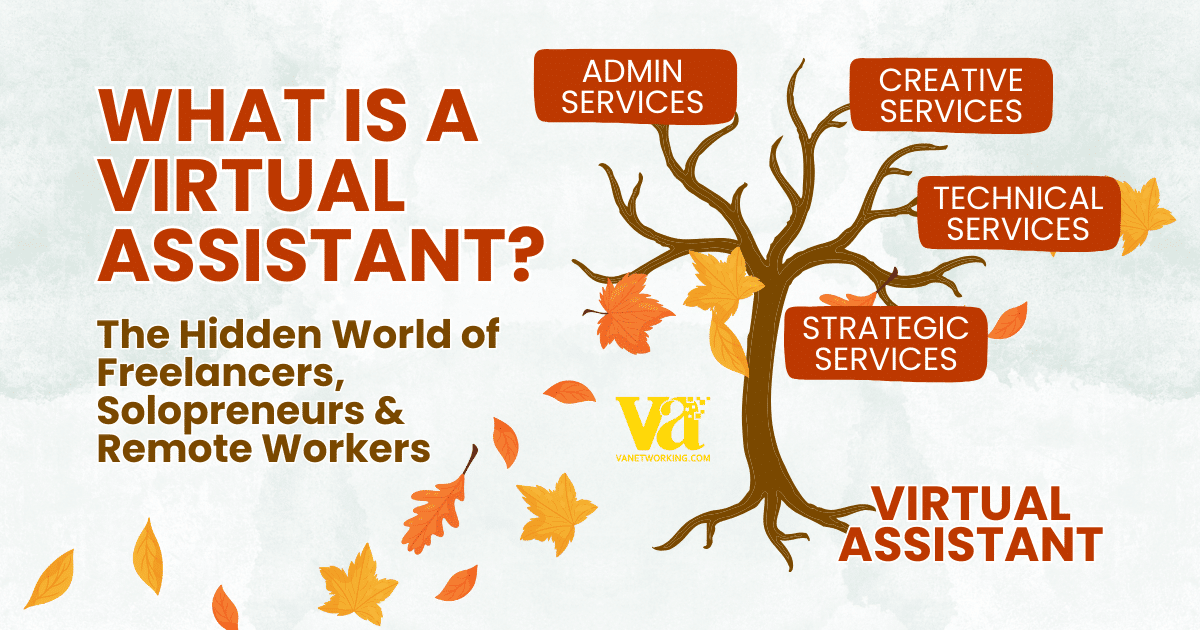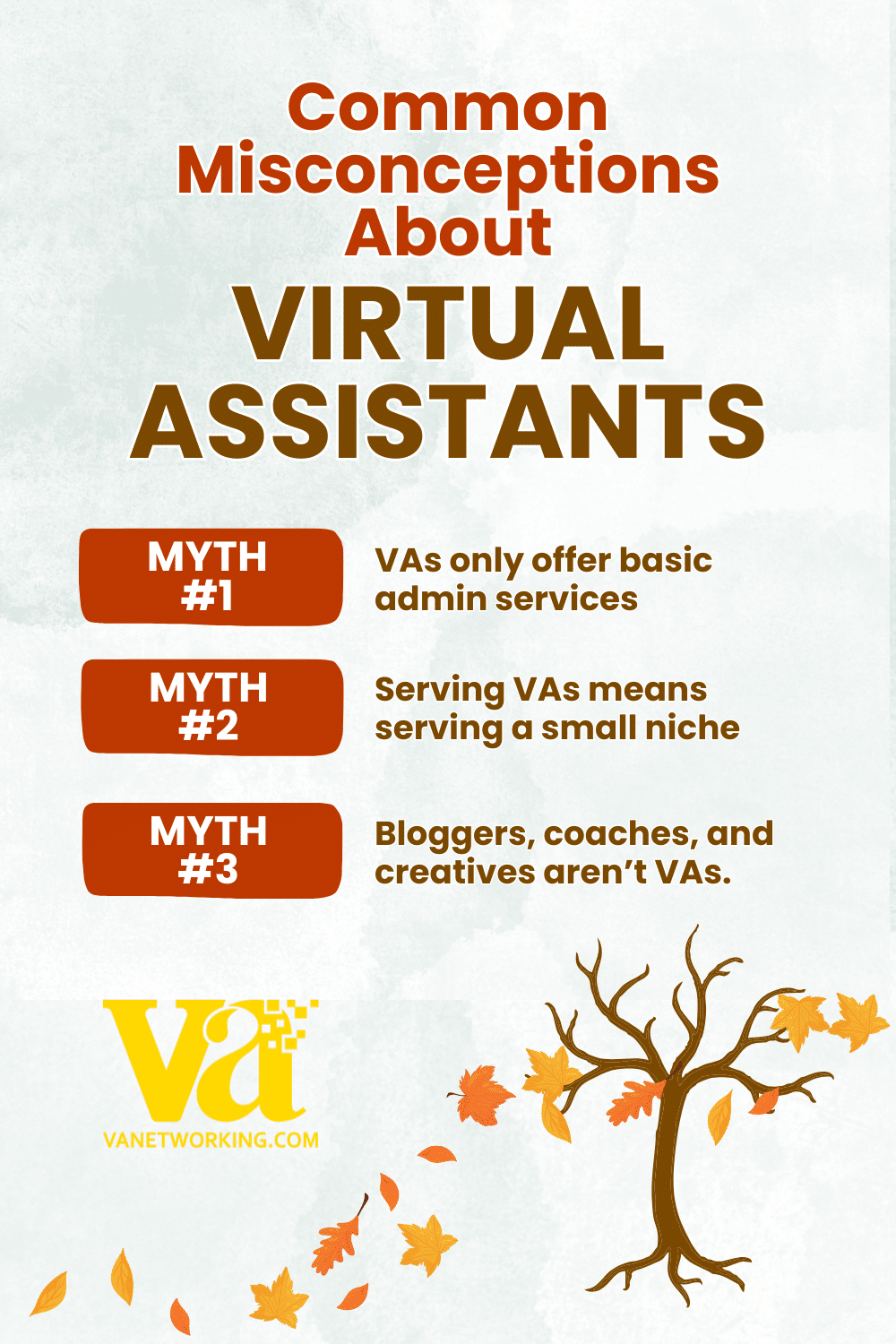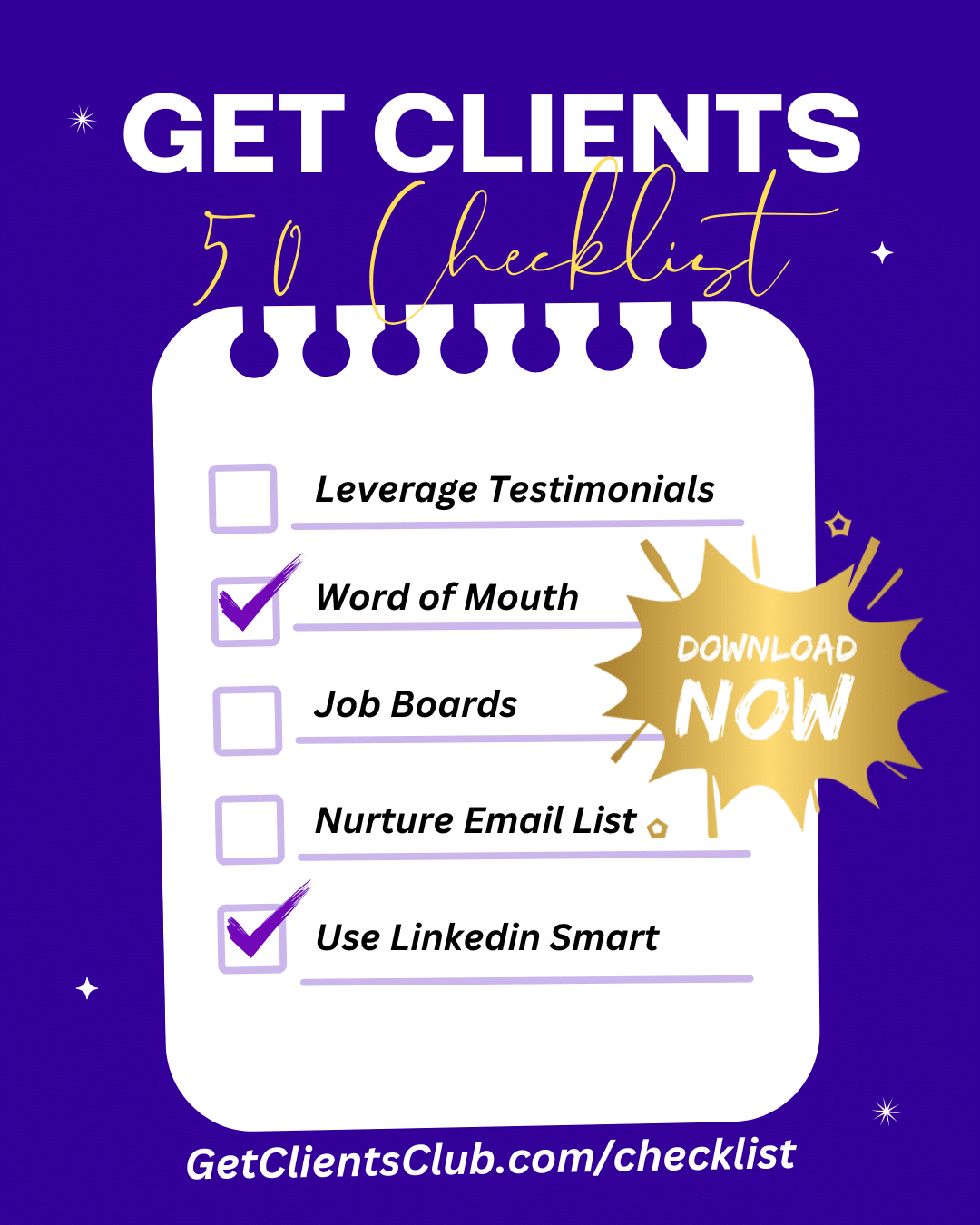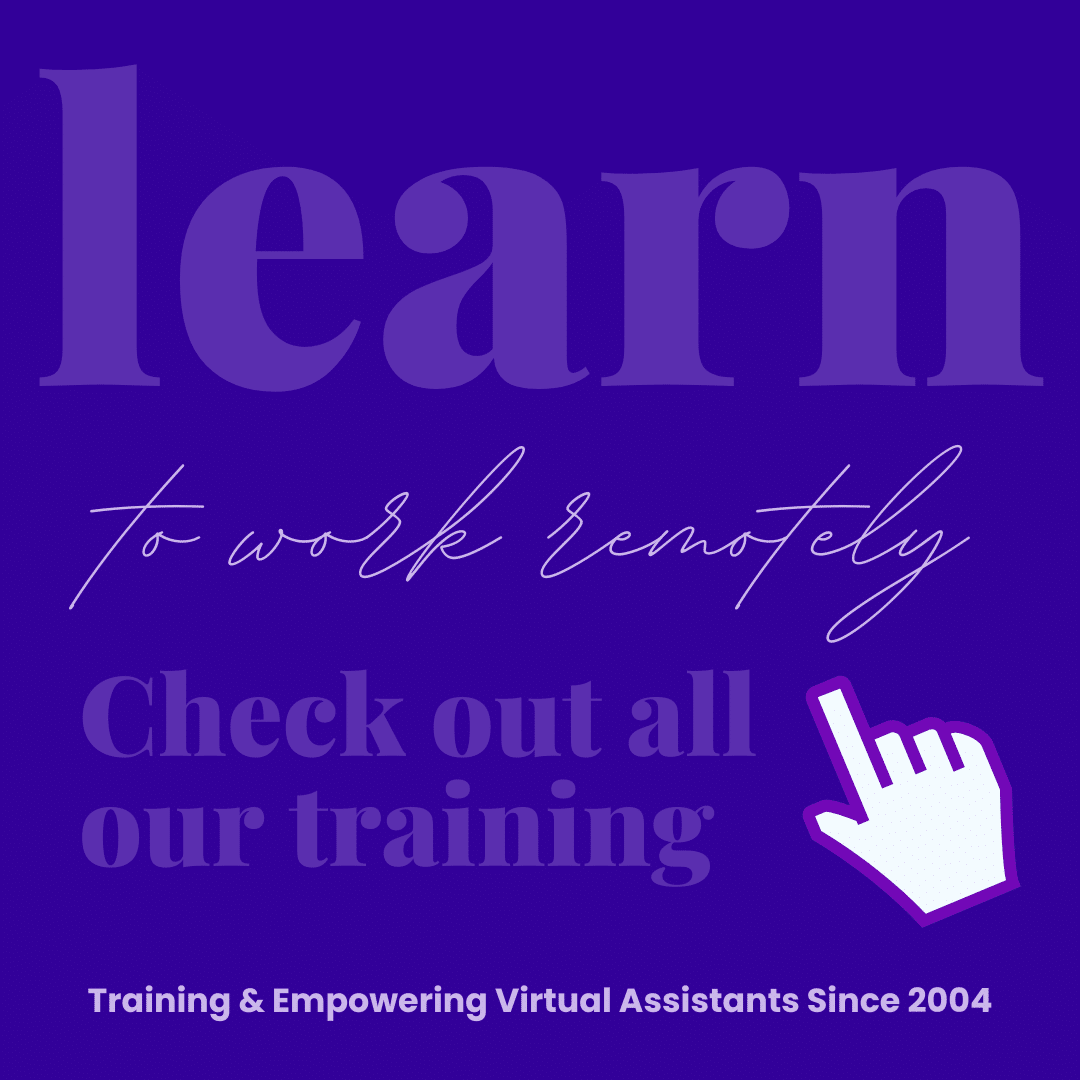The Hidden World of Freelancers, Solopreneurs & Remote Workers
When you hear the term Virtual Assistant (VA), what comes to mind?
For many, it’s someone answering emails or scheduling meetings from a laptop at home.
But here’s the truth: the VA world is so much bigger than that. Today’s “Virtual Assistant” can just as easily be a freelance writer, a graphic designer, a web developer, or even a business coach. Bloggers, creatives, and strategists all fall under the same umbrella—because at the heart of it, a VA is simply anyone providing services remotely to clients.
So, if you’ve ever wondered whether you count as a VA (or if your audience does), the answer is probably yes. Let’s take a look at how this industry came to be and why the VA label covers more people than you might think.
A Short History of the VA Industry
The VA profession didn’t appear overnight—it has roots that go back decades:
- 1990s: As email and the internet took hold, executive assistants began supporting clients virtually. No more fax machines and phone lines tied to a single office—it was possible to serve clients across the globe.
- Early 2000s: The first VA associations and forums appeared, including our own Virtual Assistant Networking Association (VANA) in 2003. These communities were lifelines for early adopters trying to explain to clients that yes, you really could hire someone online and trust the work would get done.
- 2010s: Freelance platforms like Upwork, Fiverr, and PeoplePerHour boomed, opening the doors for an explosion of freelance services. Suddenly, being a VA didn’t just mean admin—it could mean web design, SEO, podcast editing, or social media management.
- 2020s: Remote work went mainstream. The pandemic made it clear: work can be done from anywhere, and “Virtual Assistant” became shorthand for the entire online business support industry.
- Today: With AI and automation tools in the mix, VAs are blending technology with human expertise to offer more than ever before. (Curious how AI plays a role? Check out our post on Virtual Assistants vs AI).
The takeaway? The VA industry has always been about adapting to how work gets done online.

The VA Umbrella: One Term, Many Specialties
Think of “Virtual Assistant” as the trunk of a tree, with branches representing different specialties:
🌿 Admin Services
The classic entry point. This includes inbox management, scheduling, research, data entry, travel planning, and customer service. Today, admin VAs also use tools like Dubsado or HoneyBook to automate client onboarding, or Zapier to streamline repetitive tasks.
🎨 Creative Services
From copywriters and bloggers to graphic designers and video editors, these VAs handle the creative side of business. A creative freelancer might write blog posts, design brand assets, or even edit YouTube videos—anything that helps clients communicate their message and stand out online.
💻 Technical Services
Web designers, developers, e-commerce managers, and automation specialists fall here. Think setting up WordPress sites, managing Shopify stores, integrating CRMs, or building email marketing funnels. These technical freelancers are often the behind-the-scenes problem solvers who keep digital businesses running.
📈 Strategic Services
These are the big-picture thinkers: marketing consultants, project managers, and Online Business Managers (OBMs). They don’t just execute—they lead. A Digital Business Manager or Operations Coordinator might run launches, coordinate teams, or help business owners plan growth strategies.
If you’re selling to—or working as—anyone in these categories, you’re already connected to the VA space.
Common Misconceptions About VAs
It’s easy to see where confusion comes from, so let’s clear a few things up:
Myth #1: VAs only do basic admin.
Reality: Many VAs are specialists running multi–six-figure businesses. A podcast editor or web designer working virtually is every bit as much a VA as someone managing email.
Myth #2: Serving VAs means serving a small niche.
Reality: The VA industry is global, spanning millions of freelancers, service providers, and digital specialists. In fact, research shows that the freelance workforce is growing three times faster than the traditional workforce, and much of that overlaps directly with the VA space.
Myth #3: Bloggers, coaches, and creatives aren’t VAs.
Reality: If they’re providing services remotely, they’re part of the VA ecosystem. A blogger offering sponsored content or a coach providing online group programs is working virtually—and yes, that places them under the broader VA umbrella.

Why Some Don’t Call Themselves “VAs” Anymore
Here’s something interesting: many service providers don’t even use the title Virtual Assistant these days.
It’s not because they’re not VAs—it’s because they’ve chosen a more creative or specialized title to stand out in their market. The VA label is still useful for marketing (and for search engines), but it’s not the only name people go by.
Some examples you might see out there:
- Digital Business Manager (strategic oversight, similar to OBMs)
- Content Strategist (specialized in writing, blogging, or campaigns)
- Tech Integrator (focused on websites, funnels, automations)
- Online Business Manager (OBM) (higher-level management and strategy)
- Marketing Consultant (niching into strategy over execution)
- Operations Coordinator (project management with a fancier ring)
- Or even fun creative titles like Chief Chaos Wrangler, Inbox Ninja, or Systems Sorcerer
Whatever the name, the heart of it is the same: they’re providing remote business services to help clients grow. Which means—like it or not—they’re part of the VA umbrella.
And if you are part of this umbrella, you don’t have to do it alone. The VANA Community has been the go-to hub for Virtual Assistants, freelancers, and remote service providers since 2003.
👉 Join today and connect with thousands of like-minded service providers who truly get what you do.
Why This Matters to You
Understanding what “VA” really means opens up opportunities:
- If you sell tools, training, or services to freelancers, solopreneurs, or creatives, you’re already serving a VA audience—even if they don’t call themselves VAs.
- VAs are highly invested in growth. They buy training, invest in tools, and actively seek resources to make their businesses more efficient.
- The VA industry has strong buying power. With the rise of remote-first businesses, the demand for skilled VAs has only gone up.
And here’s something most people underestimate: when you market to a VA, you’re not just reaching them—you’re reaching their clients too.
VAs often support multiple businesses at once. That means:
- A VA who discovers a great tool or training may recommend it directly to their clients.
- A marketing consultant VA might implement your product across several businesses.
- A technical VA might set up your software for every client they onboard.
👉 One sale to a VA can multiply into 10, 20, or even 50 exposures as they introduce your product or service across their client base.
This makes VAs one of the most valuable audiences you can connect with—not just as buyers, but as influencers with exponential reach across industries and niches.
Ready to Partner With Us?
Here’s the exciting part: if your audience includes bloggers, freelancers, or creatives, they’re already part of the VA world—whether they use the term or not.
That means your products and services could be a perfect fit for VAs, and you don’t have to go searching for a new audience. They’re already here.
When you become a VANA Affiliate Partner, you’ll:
- 💜 Earn commissions by sharing our trusted VA training and resources.
- 💜 Get done-for-you swipe copy, graphics, and affiliate tracking so promotion is easy.
- 💜 Partner with a long-standing brand—VANA has been supporting VAs since 2003.
- 💜 Be part of an industry that’s growing every single year.
👉 Sign up today to become an affiliate partner with VANA and start earning while helping VAs (a.k.a. your audience) grow their businesses.





